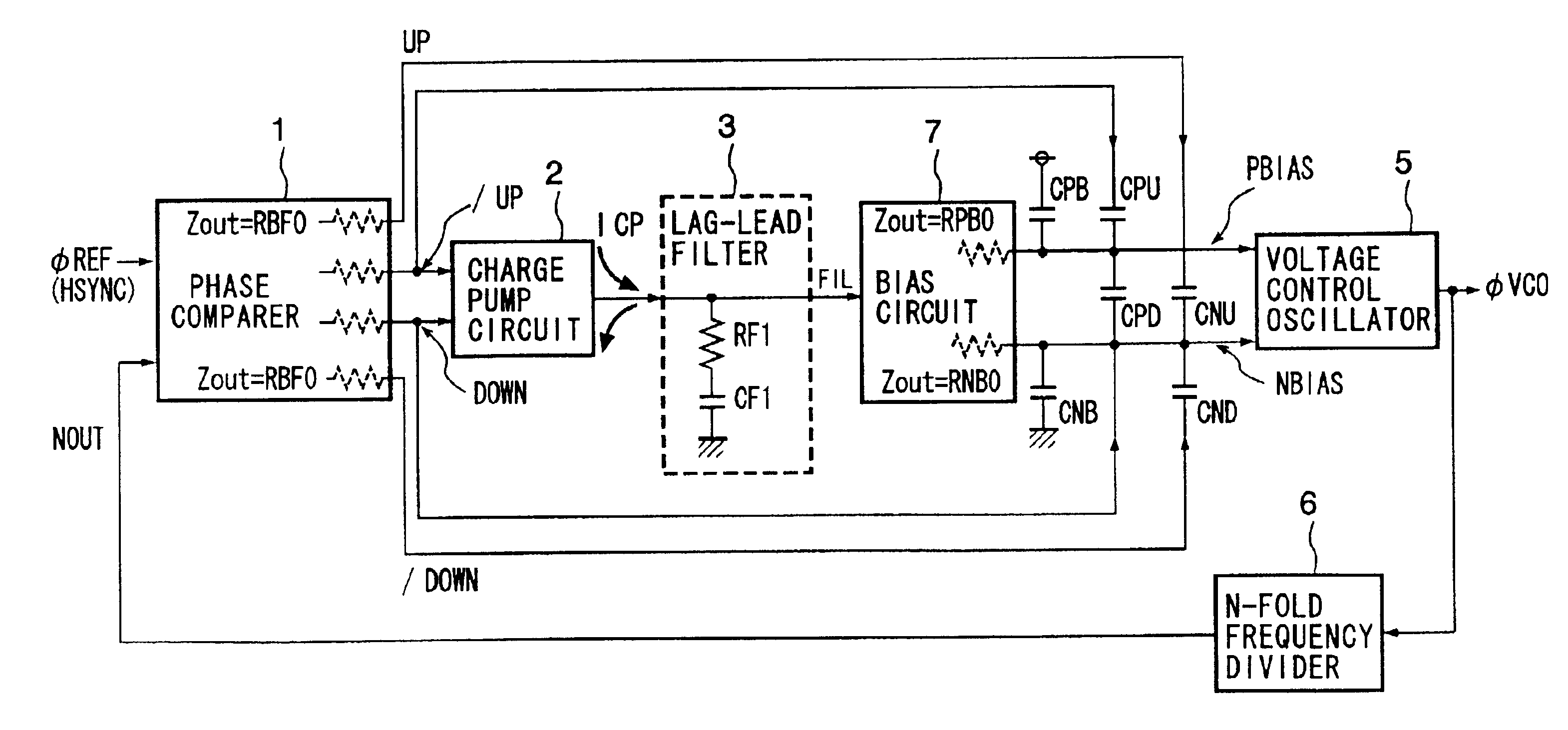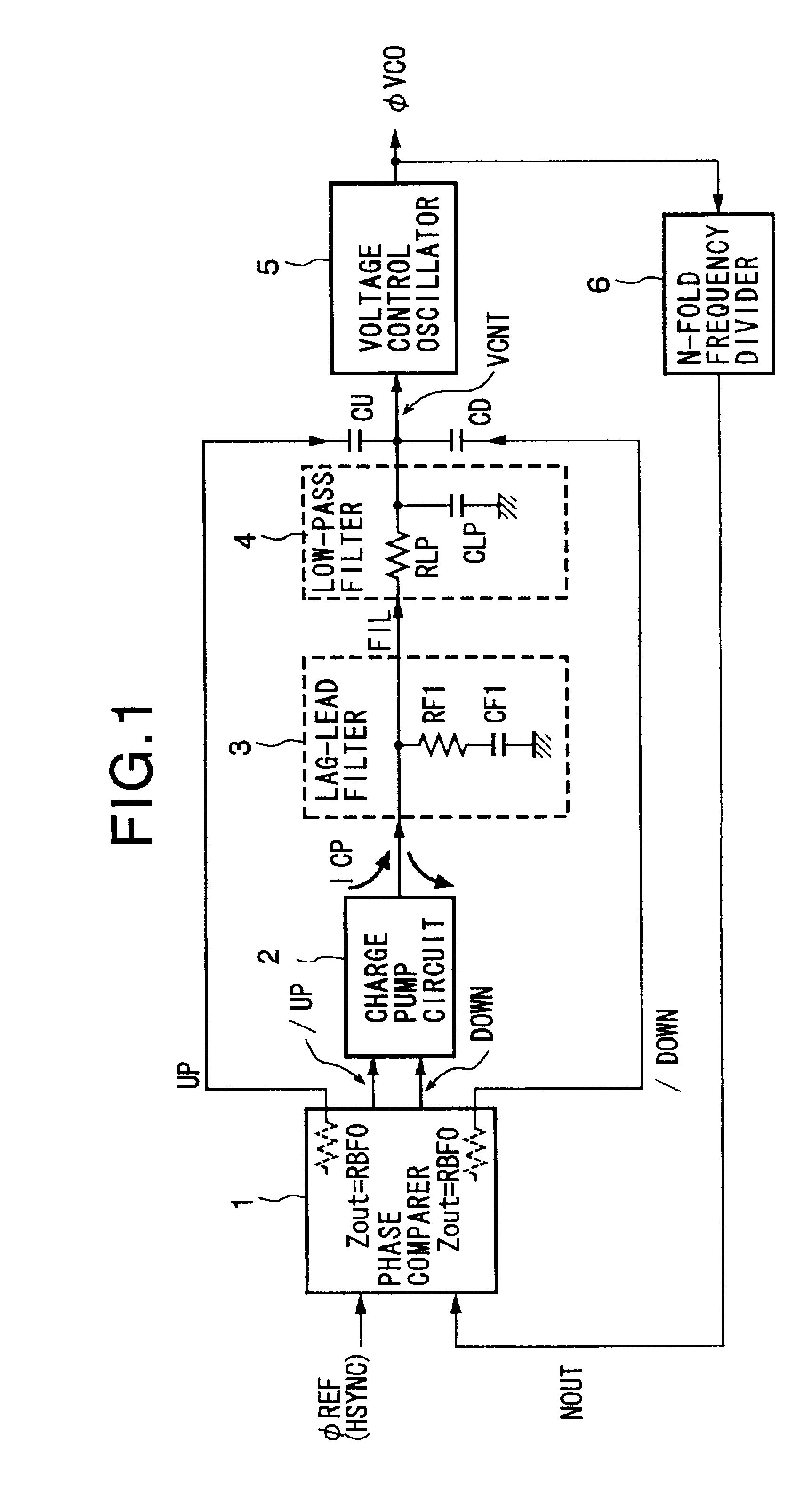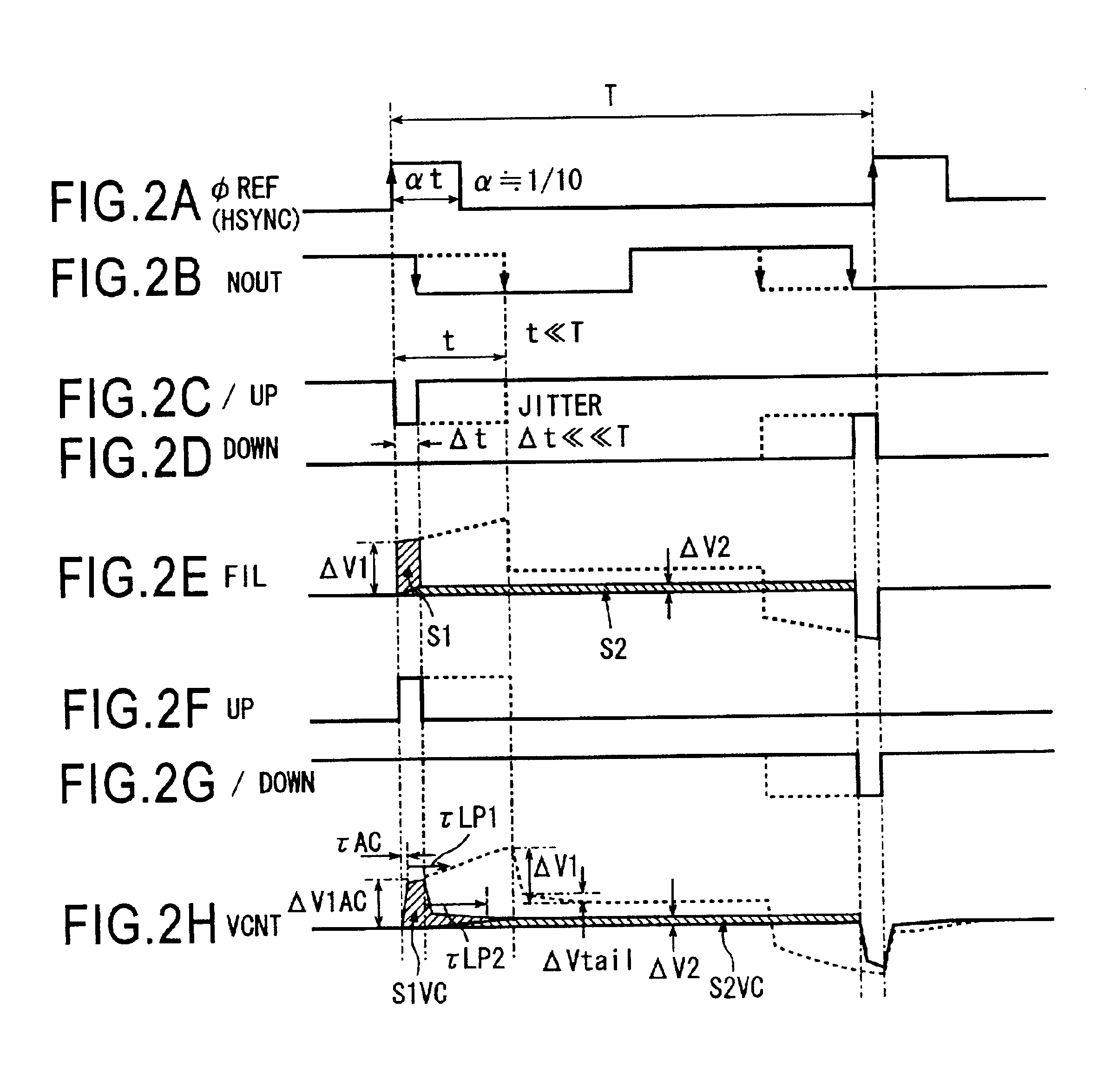Phase-locked loop circuit and delay-locked loop circuit
a phase-locked loop and delay-locked technology, applied in the direction of phase difference detection angle demodulation, automatic control of pulses, electrical devices, etc., can solve the problem of difficult circuit design to correct exactly 100% of jitter, rectangular waveform of control voltage of voltage controlled oscillator or voltage controlled delay circuit ends up being blunted, etc. problem, to achieve the effect of reducing frequency change and reducing frequency chang
- Summary
- Abstract
- Description
- Claims
- Application Information
AI Technical Summary
Benefits of technology
Problems solved by technology
Method used
Image
Examples
first embodiment
[0162]FIG. 1 is a view of the configuration of a first embodiment of a PLL circuit according to the present invention.
[0163]The PLL circuit shown in FIG. 1 includes a phase comparator 1, a charge pump circuit 2, a lag-lead filter 3, a low-pass filter 4, a voltage-controlled oscillator 5, a frequency divider 6, a capacitor CU, and a capacitor CD.
[0164]The phase comparator 1 compares phases of a reference signal φREF and an output signal NOUT of the frequency divider 6 and outputs an up signal and an inverted up signal / UP and a down signal and an inverted down signal / DOWN according to the result of comparison.
[0165]The charge pump circuit 2 receives the up signal / UP and the down signal DOWN from the phase comparator 1 and outputs a charging and discharging current ICP to the lag-lead filter 3.
[0166]The lag-lead filter 3, for example, is comprised of a resistor RF1 and a capacitor CF1 connected in series between the output of the charge pump circuit 2 and the ground line. It receive...
second embodiment
[0194]FIG. 3 is a view of the configuration of a second embodiment of a PLL circuit according to the present invention.
[0195]The PLL circuit shown in FIG. 3 includes a phase comparator 1, a charge pump circuit 2, a lag-lead filter 3, a bias circuit 7, a voltage-controlled oscillator 5, a frequency divider 6, a capacitor CPB, a capacitor CNB, a capacitor CPU, a capacitor CPD, a capacitor CNU, and a capacitor CND.
[0196]The same reference numerals in FIG. 3 and FIG. 1 refer to the same constituent elements.
[0197]The voltage-controlled oscillator 5 for example has a circuit as shown in FIG. 15 described above.
[0198]The bias circuit 7 for example has a circuit as shown in FIG. 16 described above.
[0199]The PLL circuit of the present invention shown in FIG. 3 differs from the PLL circuit of the prior art shown in FIG. 13 in the point that in the PLL circuit in FIG. 3, a capacitor CNU and a capacitor CND are provided on the output line of the bias voltage NBIAS, the outputs of the phase com...
third embodiment
[0215]FIG. 5 is a view of the configuration of a third embodiment of a PLL circuit according to the present invention.
[0216]The PLL circuit shown in FIG. 5 includes a phase comparator 1, a charge pump circuit 2, a lag filter 4, a voltage-controlled oscillator 5, a frequency divider 6, a capacitor CU, and a capacitor CD.
[0217]The same reference numerals in FIG. 5 and FIG. 1 refer to the same constituent elements.
[0218]The point of difference of the first embodiment of the present invention shown in FIG. 1 and the third embodiment of the present invention shown in FIG. 5 lies in the fact that the lag-lead filter 3 which had been inserted between the low-pass filter 4 and the charge pump 2 in the PLL circuit in FIG. 1 is deleted from the PLL circuit in FIG. 5.
[0219]In the PLL circuit in FIG. 5, a capacitor CU and a capacitor CD are provided at the output of the lag filter (low-pass filter) 4, and the outputs of the phase comparator 1, that is, the up signal UP and down signal / DOWN, ar...
PUM
 Login to View More
Login to View More Abstract
Description
Claims
Application Information
 Login to View More
Login to View More - R&D
- Intellectual Property
- Life Sciences
- Materials
- Tech Scout
- Unparalleled Data Quality
- Higher Quality Content
- 60% Fewer Hallucinations
Browse by: Latest US Patents, China's latest patents, Technical Efficacy Thesaurus, Application Domain, Technology Topic, Popular Technical Reports.
© 2025 PatSnap. All rights reserved.Legal|Privacy policy|Modern Slavery Act Transparency Statement|Sitemap|About US| Contact US: help@patsnap.com



